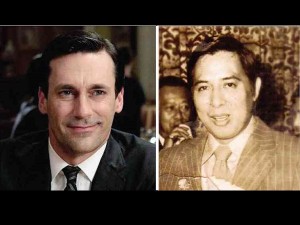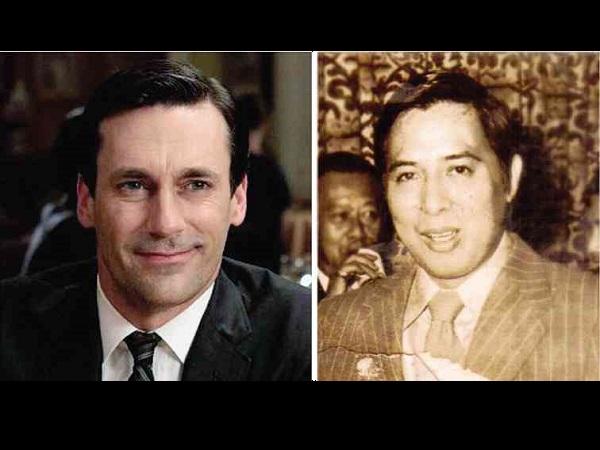
I got hired in advertising in 1961, and throughout the ’60s and ’70s we were imitative of the jargons, posturing and thinking of ad men in Madison Avenue, New York, US of A.
The television series titled “Mad Men” portrayed the titillating facets of working in advertising—the rat race, office rivalry and infighting, the intrigue, one-upmanship, and indiscretions of working in an office whose main business is to generate sales ideas and to get a quick promotion for it.
Us Mad men dictated the images and mnemonic devices to enliven the trivialities and vagaries of daily lives.
The ’60s and ’70s were the golden years of advertising in America. Madison Avenue in New York City was the Mecca of advertising. In that avenue, the gurus and superstars of advertising were “kings of the hill,” as Frank Sinatra’s song,“ New York, New York,” said.
Ad men
Leo Burnett (an Alfred Hitchcock look-alike) created a country for tough men called Marlboro Country which made the brand a leader worldwide.
David Ogilvy (the haughty Brit migrant) used mystique in selling Hathaway shirts by putting an eye patch on his royal blood model.
Ajax detergent introduced the white knight galloping through washdays for the cleanest, whitest wash.
Shirley Polycop of FCB used female psychology in selling Clairol hair coloring with a provocative line, “Does she or doesn’t she.”
“Pepsi Day” became your calendar of activities.
“Think Small” was Bill Bernback’s (the gentleman with brains) way of selling the virtue of thrift in Volkswagen.
A loud animal roar emitted from your gas tank because Exxon gasoline in the US (Esso locally) told you to “Put a Tiger In Your Tank.”
Mad men coined a lot of jargons and expressions to spice up their hubris. We took this to mean knowledge and professional posturing of the trade. We imitated them to gain our career pizzazz quickly.
If we wanted to test whether our ideas would be effective in the market place we said, “Let’s spill the milk and see if the cat will lick it,” or “Why don’t we raise the flag and see if anyone salutes.”
We would intimidate clients who were hesitant to approve our ideas with an acerbic question, such as, “Is anybody going to get killed if we run the campaign?”
Dressing for success
We adopted the Madison Avenue dress sense, too; funny, in my case, because I’d take the crowded JD bus from San Francisco del Monte, standing up in the aisle with my white, long-sleeve shirt crumpled. Disheveled, I reached Rufino Building on Ayala Avenue. Once in the office, I’d put on one of my two ties which I kept in my drawer, go to the men’s room to groom my hair flat and parted like Don Draper (or Leopoldo Salcedo, locally), the Mad men’s de rigeur hair groom. Then I’d put on my one and only suit that I parked in my supervisor’s cubicle to complete the Mad men look.
All our suits were made by an enterprising tailor, named Ernie Samia, whom we rechristened as Ernie D. Taylor. Ernie made suits on installment payments. He came every payday to collect and take orders. He carried a bulging clutch bag full of fabric swatches from Kamuning market, and went around all agencies on Ayala Avenue and Vito Cruz to clothe all Filipino Mad men. We tried to evade Ernie on collection days. But no one really escapes him. If you got pirated by another agency, Ernie would find you there.
If you grew up in the ’50s, you must have taunted your playmates with “Kiko patay patay! Kiko patay patay!” (Star Margarine’s opening lines for its nutrition sell).
“Tinday! Palalayasin kita!” was P&G’s racist threat to a kasambahay who did a lousy job of washing laundry by not using P&G laundry bar.
Of course, you sang Tide’s memorable ditty, “Puputi ang damit kahit hindi ikula; Lilinis ang damit kahit hindi ikula; gamitin n’yo bagong Tide, Bagong Tide.”
Tide was a big landmark in the history of marketing and advertising. It changed the habits of women doing laundry by eliminating bleaching deemed a big reason for washing whiter and cleaner clothes. P&G product and consumer research became famous.
Another change in consumer habit happened when we introduced Safeguard antibacterial soap as the soap that’s “gamit ng mga doktor sa ospital.” Overnight, the soap market shifted from beauty bars such as Lux and Camay to Safeguard. It became the household bath soap because playful kids with germs must be kept germ-free and clean.
Black-and-white TV was the new medium in the early ’60s. We made some breakthrough commercials with “Utos ni Mayor” for Tide, and “Lahat ay Mapapalingon” for Camay Soap.
San Miguel Beer came up with memorable lines like “Isa Pa Nga” and “Iba ang May Pinagsamahan,” while Ginebra San Miguel monopolized hard labor and livelihood workers with the ditty, “Ang Inumin ng Tunay na Lalaki!”
Banco Filipino became an instant sensation with the jingle, “Sa Banco Filipino, araw-araw interest ng interest.” This also made Greg Garcia the youngest hotshot adman in town, flaunting his new attaché case.
Filipino-focused
In the late ’70s, I pioneered the concept of the “Think Filipino, Feel Filipino and Talk Filipino” in creating advertising in Basic Advertising, our agency. I also shed off my silly Madison Avenue pretensions.
My passion for consumer insights drawn from Filipino culture resulted in many successful brand campaigns such as “Reseta ng Doktor” for Benadryl, “Tsikletin Mo Baby” for Chiclets chewing gum, “Lalaking Disente” for Three Flowers pomade and the classic “Langhap Sarap” for Jollibee, creating a huge domestic and export market for a Filipino brand. It’s the biggest, most successful Filipino brand in the business.
My friend, Telly Bernardo, conceived the hyperbole, “Mukhasim” campaign for Datu Puti vinegar. Another friend, the late Danny Almiranez created “Tamis-Anghang,” immortalizing UFC Banana Catsup here and abroad.
In the late ’80s, our agency made a lot of magic in the marketplace. We overhauled the image of Sarsi from a poor man’s drink to a classy brand by doing a fantastic cultural aesthetic on film calling it Sarsi “Angat Sa Iba.” We also changed the wallflower image of Palmolive Soap into a modern teen hip hopping in a modern music video. We called it, “I Can Feel It.” Palmolive Shampoo was sold as “Hiyang.” All these campaigns resulted in market leadership within a month or two.
We created “Babalik Ka Rin” for Duty Free and its sales tripled in one month—in US dollars. We were No. 1 in the ’80s. And unstoppable.
I think the Mad men eras faded at the end of the ’70s.
During the mid-’80s and up to the present, wacky or shocking commercials were given awards at the Cannes Festival. They were called interruptive creativity because of their ability to stop the viewer dead in its track. The creative people went nuts over the Cannes awards. They still are.
During our time, there were no awards. The only reward we got was client’s eternal gratitude and admiration for making the cash registers ring and our ability to deliver the highest return on investment for their money spent in advertising.
They called us geniuses.
E-mail the author at [email protected].













































